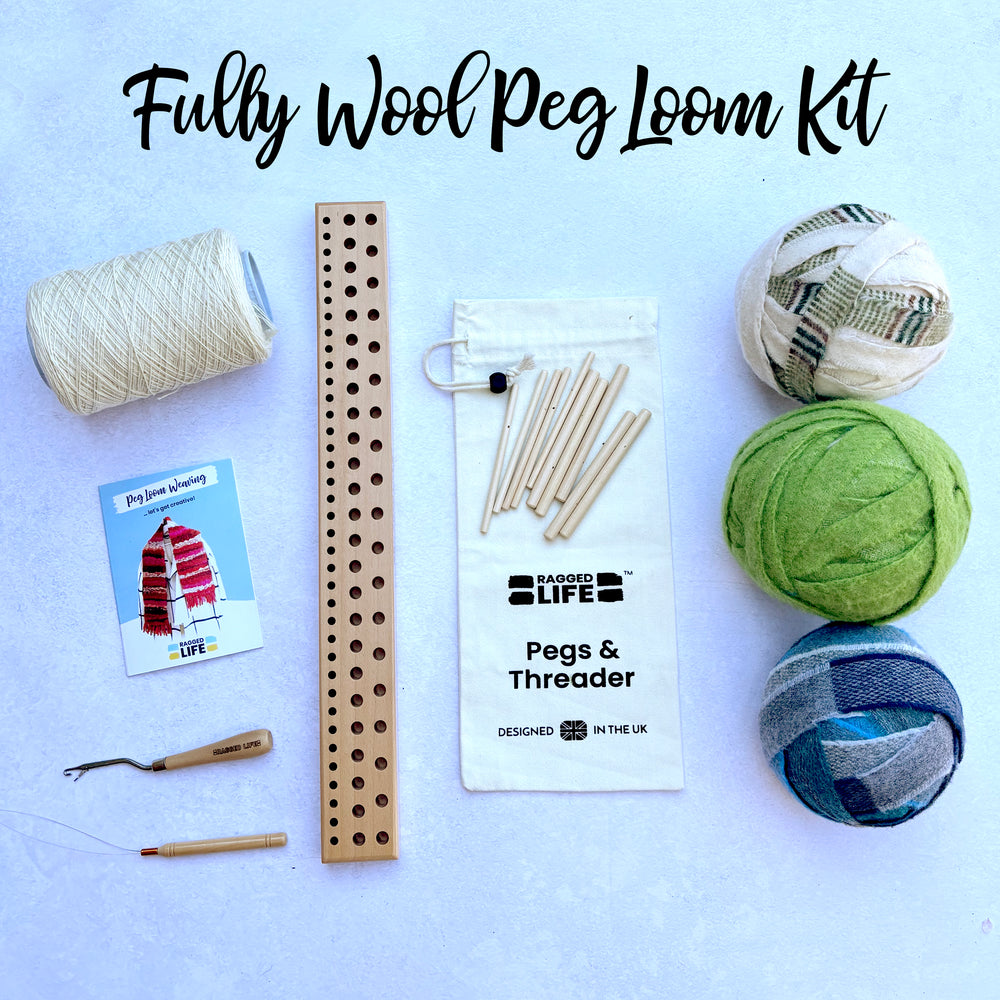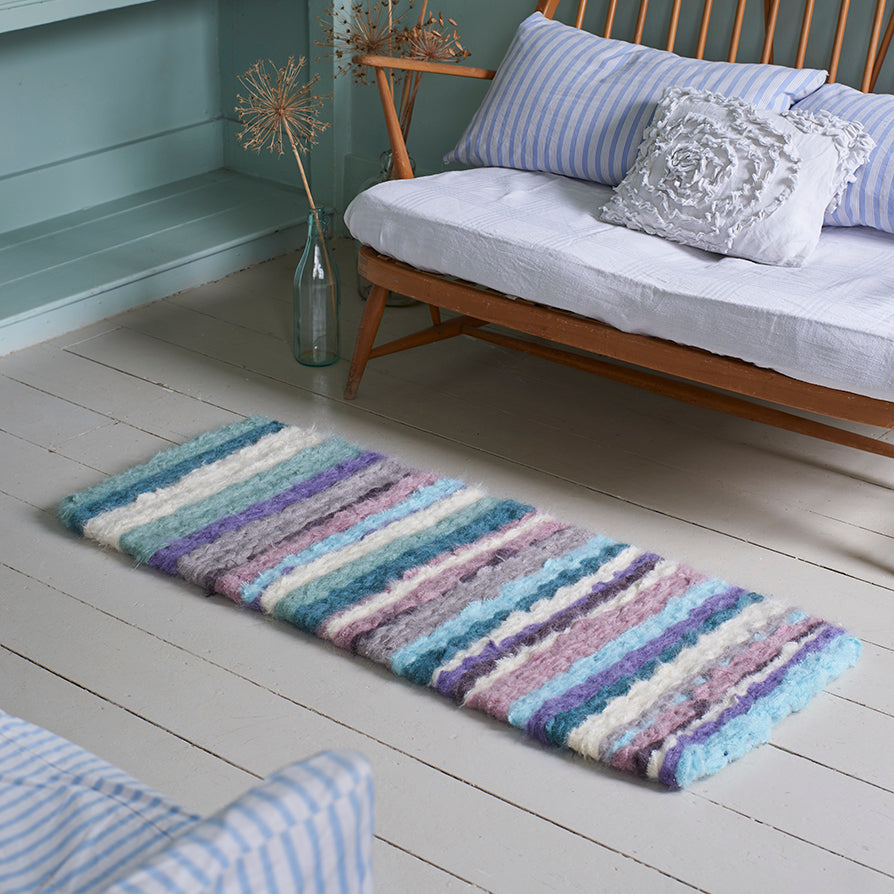A mindful technique that will have you hooked!
If you're looking to take up a craft that is easy to learn, mindfully repetitive and super quick to build then I can't think of a better technique than peg loom weaving.
It's truly the easiest craft you can learn and can be used to make all manner of different projects, including rugs, cushions, bags, wall hangings, blankets, scarves and much more...
Below we've pulled together some basic beginner advice, but if you'd like to learn in person then definitely check out our Beginner-Friendly Peg Loom Weaving Workshops.
What is Peg Loom Weaving?
Peg loom weaving is the quickest and easiest form of weaving that you'll ever try!
Using a wooden loom with vertical pegs, you weave fabric strips, yarn, or even raw fleece back and forth between the pegs. Once the weaving has built up to to the tops of the pegs, the weaving is transferred from the pegs onto the "warp" (the string that has been threaded through the holes at the bottom of each peg). This process is repeated over and over again, building up the weaving down the strings.
Peg loom weaving is a fantastic way to upcycle old textiles, turning worn-out t-shirts, bedsheets, or leftover wool into something completely new and unique. It’s super forgiving - no complicated techniques, just a rhythmic, meditative process that lets you play with colours and textures.
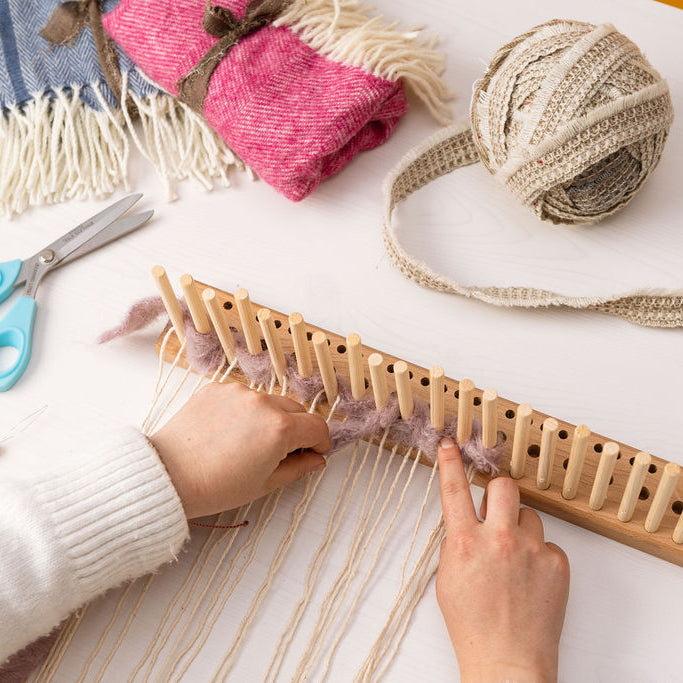
What Equipment Do I Need to Peg Loom Weave?
Peg loom weaving requires very little equipment. Below is a summary of what you need to give this technique a go....
- Peg Loom & Threader (see below section for more details)
- Warp (see below section for more details)
- Fabric Scissors / Rotary Cutter & Mat- we like to cut fabric strips by cutting through lots of layers at once, using super sharp Rag Rug Scissors. See them in action here.
- Latch Hook / Spring Tool / Crochet Hook - this is to sew in your tails at the end of a project. Personally, we use a latch hook.
- Fabric / Wool / Raw Fleece - the material used to create your design is called the "weft" (see below section for more details)
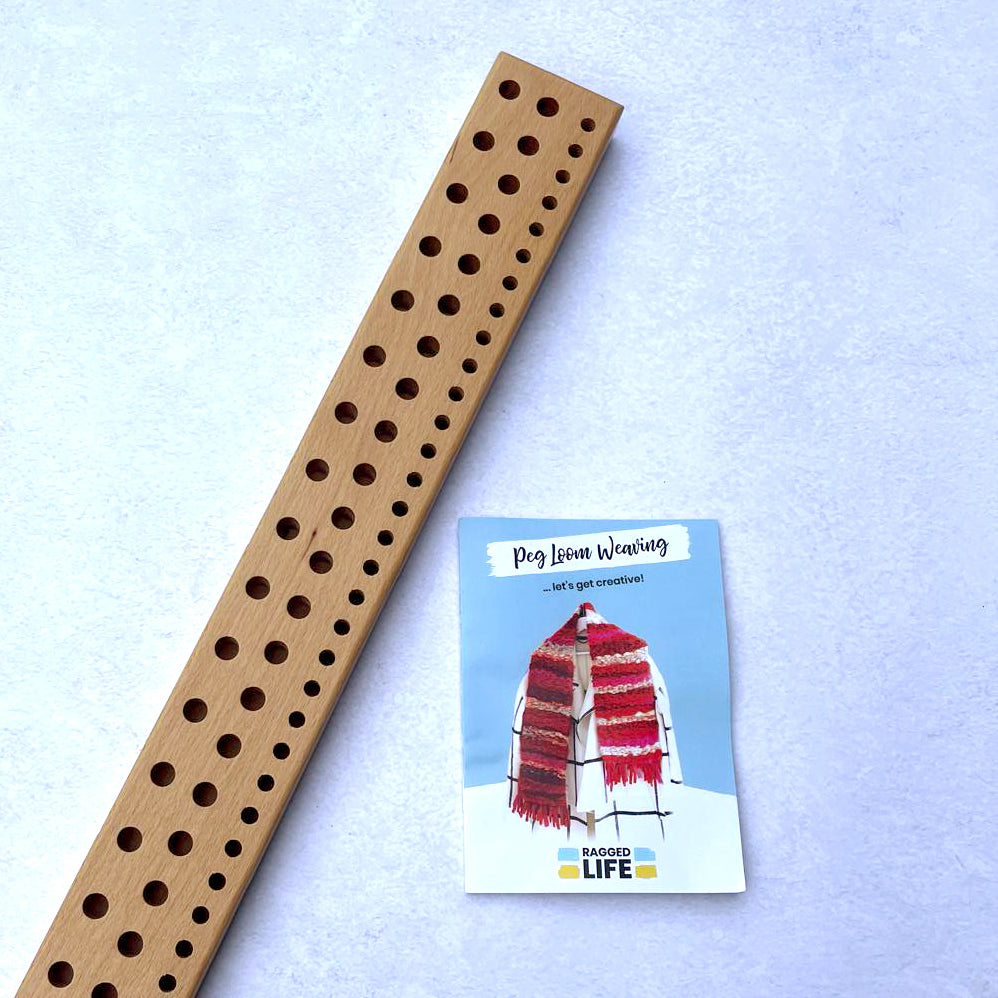
Peg Loom and Threader
Peg looms come in various sizes, from small looms ideal for scarves and cushion fronts to larger ones perfect for rugs and throws. Look for a sturdy wooden loom with evenly spaced pegs. The length of the peg loom dictates the maximum width you can weave, so always buy the longest peg loom you can afford at the time as it'll give you more project options. We sell 50cm peg looms and 90cm peg looms on the Ragged Life Online Shop. You can weave any length of project on any peg loom as it's dictated by how long you cut your warp strings.
All peg looms should come with pegs to fit the holes (ours include a few spares) and a wire threader, which allows you to pass string through the holes at the bottom of each peg.
Our Ragged Life adjustable peg looms are drilled with three rows of holes so you can work with all different thicknesses of fabric and even knitting yarn / wool. Peg looms with one row of holes are generally made to only work with one material e.g. raw fleece or cotton strips. You only ever put the pegs into one row of holes.
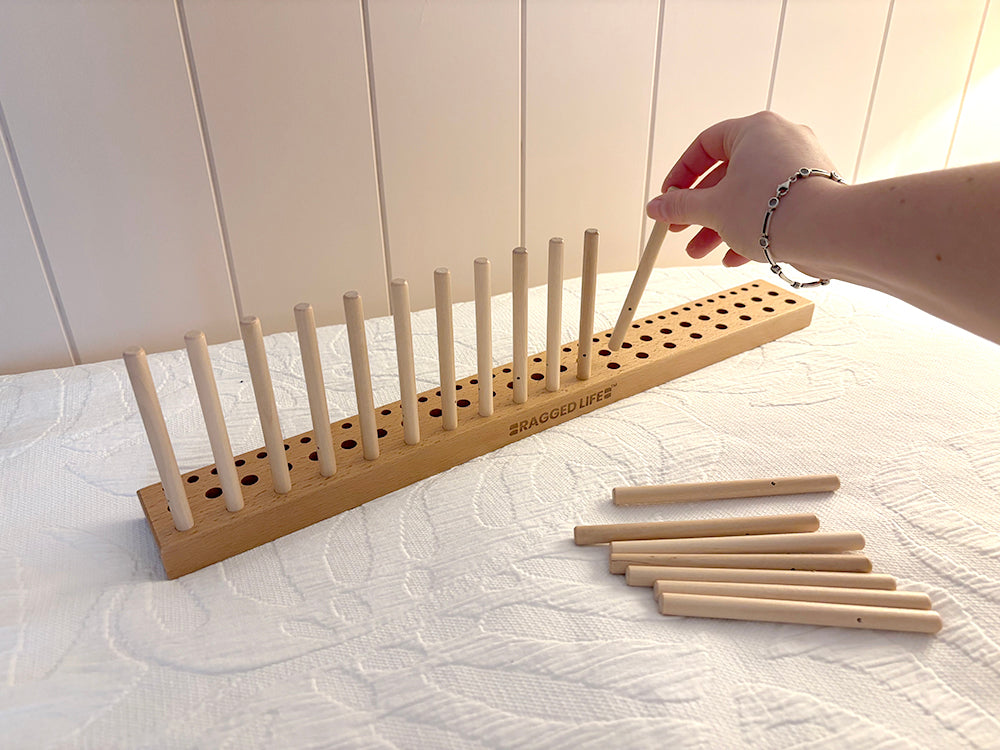
Warp (String)
Warp is the foundation of your weaving! It's the string that forms the vertical framework that holds your peg loom weaving together. Choose a strong thread or yarn, such as cotton or nylon, that won’t break under tension. The 1000 metre reel of warp we sell on the Ragged Life website is 90% wool and 10% nylon for quality combined with strength. Whatever you choose needs to be thin enough to fit through the small holes at the bottom of your pegs. The colour of the warp doesn't really matter as you shouldn't be able to see it in the body of your weaving in the end. However, we recommend being kind to yourself and choosing a colour that doesn't contrast too much with the fabric or yarn that you'll be peg loom weaving with (just in case!)
Tip: If you are working on a particularly large project or one with very heavy-weight fabrics, sometimes it helps to double or treble up your warp to make it even stronger and more robust.
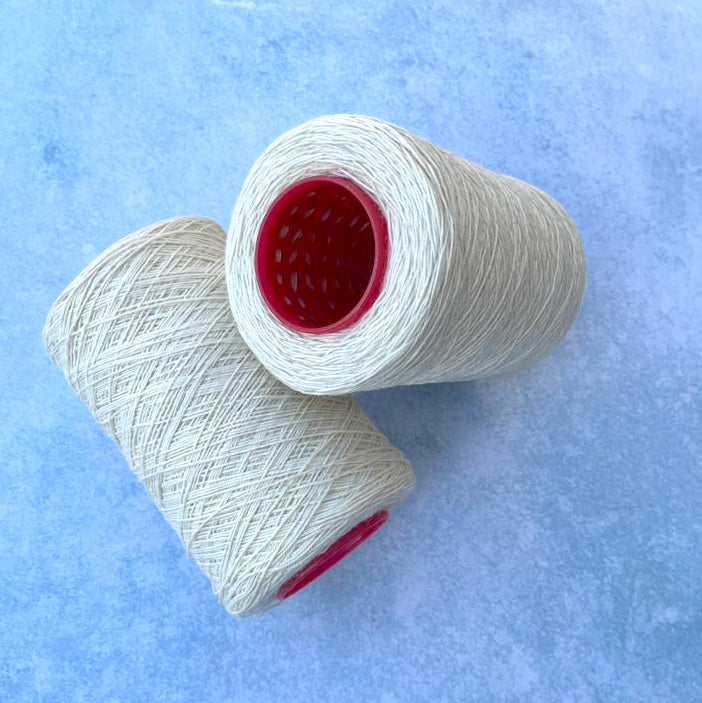
Weft Material
The weft is what you weave in and out between the warp threads to create your pattern and colour scheme. This could be yarn, raw fleece, or old textiles, such as t-shirts, cotton sheets or denim jeans. Whatever you choose, ideally use a similar thickness of material throughout the whole project. e.g do not try to combine 4 ply knitting yarn in the same project as strips of denim. The peg loom weaving will end up looking unbalanced and lumpy (trust us, we've been there).
If you are working with recycled fabrics, cut strips approximately 5cm in width. The longer the strip the better as otherwise you'll have to do a lot of joining (watch three methods for joining strips here). Cut thicker fabrics narrower and thinner fabrics wider to compensate for different thicknesses within the same project. Ideally, fabric strips should all roll up lengthways to approximately the thickness of a pencil.
Tip: If you're looking to spend more time peg loom weaving and less time cutting strips and joining them together, take a look at our 100% wool blanket selvedge strips. They're one of the best materials for beginners, as they come pre-cut into strips and make gorgeously cosy, chunky rugs and mats. Another material that comes pre-cut into strips is our Ragged Life recycled sari silk ribbon. It's lighter-weight than Woollen Blanket Yarn and has a beautiful sheen and lustre. It makes projects look expensive and sophisticated, which is why we like using it for cushions, wall hangings and decorative pieces.
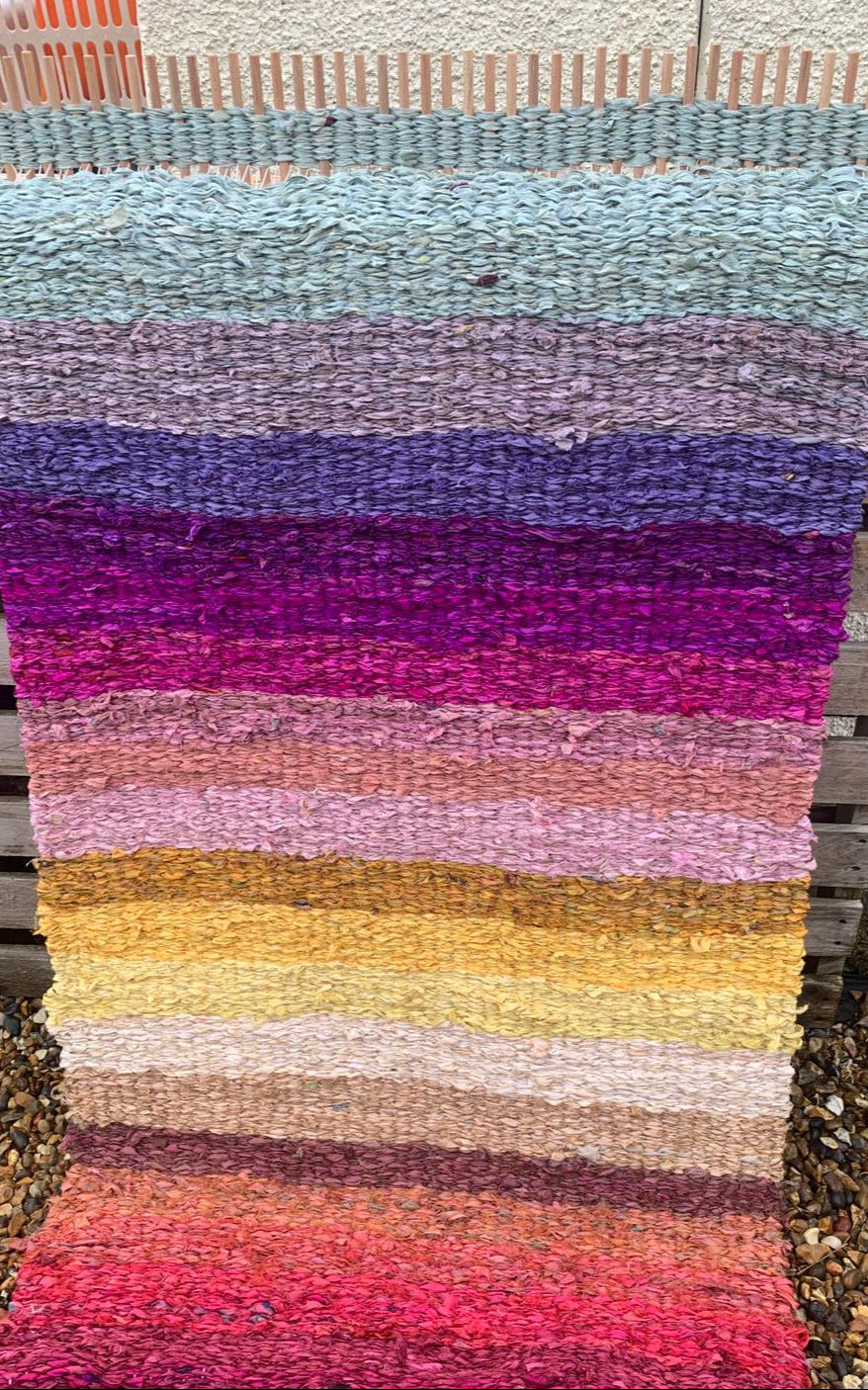

Looking for convenience?
Check out our Peg Loom kits below, where you can buy all the tools, instructions and fabrics bundled together to make your first rug (or perhaps multiple smaller project). We also sell our 50cm peg looms and 90cm peg looms without the fabric, warp and latch hook if you already have some equipment and /or materials at home.

Want to see peg loom weaving in action? Watch our FREE "Peg Loom Weaving for Beginners" tutorial videos below...
We've created a free YouTube playlist specifically designed to help beginners learn how to peg loom weave for the first time. Watch the four videos in the series below and give us a follow if you like our content. Got any questions? Read our FAQs section below or comment on any of our videos if you're unsure of anything.
Video 1: The Equipment
Here, Elspeth talks through the tools needed to peg loom weave in a bit more detail than above, including the peg loom, pegs, warp, threader, scissors, latch hook and fabrics.
Video 2: Setting up the Peg Loom
And here you can watch how to correctly set up a peg loom before you start weaving...
Video 3: How to Peg Loom Weave
The watch how you go about doing the peg loom weaving itself...
Video 4: Finishing Off The Peg Loom Weaving
And finally, see how you go about finishing off your peg loom weaving, sewing in tails etc...
Top Tips for Beginners
1) We recommend making your first project from all the same fabric e.g. cotton, chunky wool or blanket yarn. It's easier to get used to the technique when working with similar thickness fabrics.
2) Work with the warp strings laid out away from your body, as opposed to coming towards your body. This prevents them getting tangled in your lap.
3) Before advancing the warp, check to make sure that you haven't skipped any pegs when weaving in and out. It's easy to fix mistakes before you transfer the weaving onto the warp, but difficult afterwards.
4) If you join lots of strips of fabric together before you begin peg loom weaving then you can get into a real rhythmn. If you join together all different colours then the rug will pattern randomly creating a "hit and miss" rug.
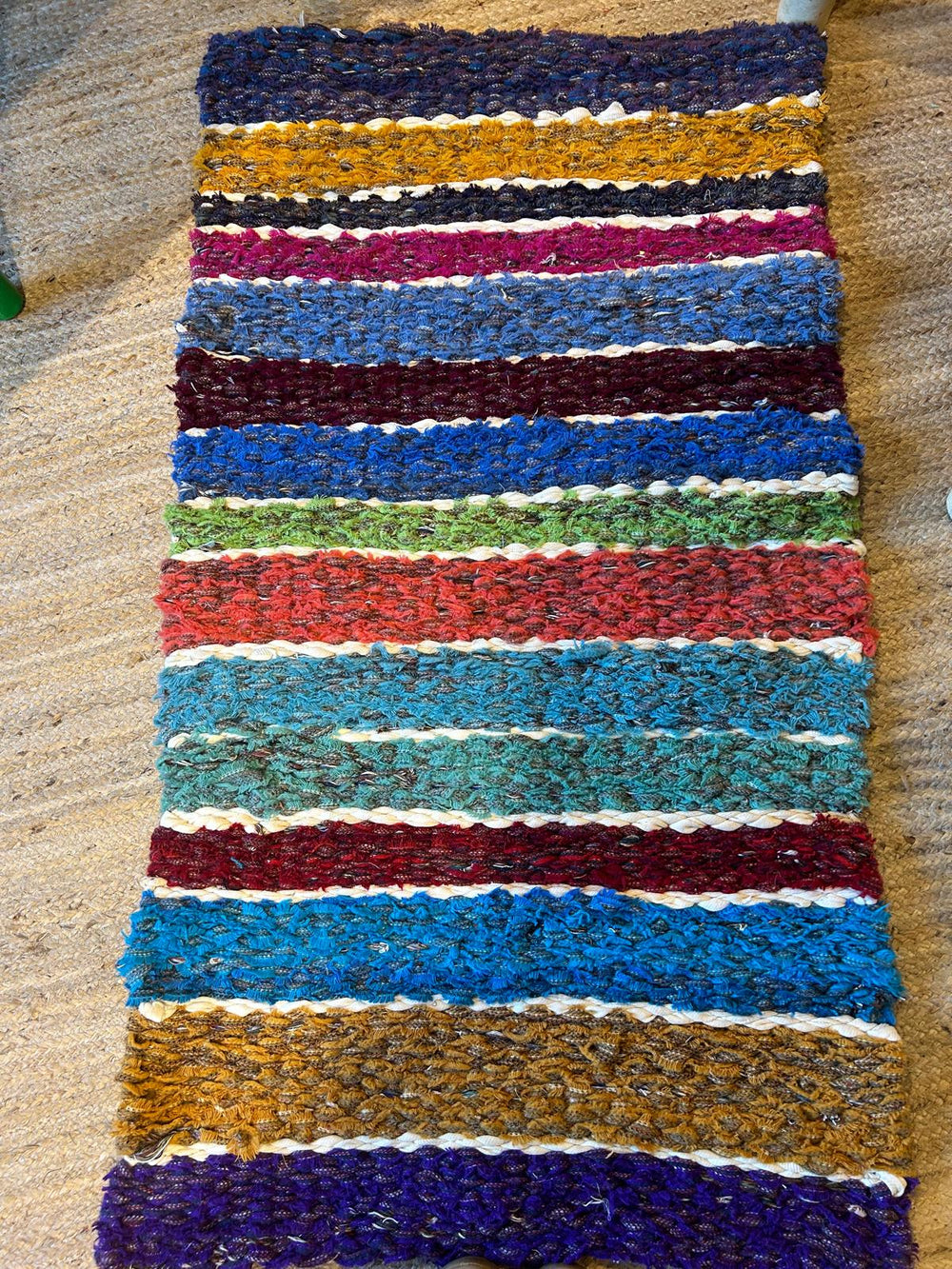
Project Ideas & Inspiration
We often share out latest makes on the Ragged Life Instagram page or Facebook page, so those are great resources to see what peg loom and rag rug projects students have made in the past.
For detailed instructions and pretty projects, we also have four beginner projects in our second book "Rag Rug Techniques for Beginners". One project in the book even teaches students how to weave from both sides of the peg loom at once to create a paint-drip effect, as demonstrated in our blue and pink cushion.
Great beginner projects include: rugs, runners, mats, cushions, wall hangings, blankets, scarves, seat pads and placemats.
Harder peg loom projects are ones that require assembly at the end, such as bags.
Below are some peg loom woven projects made by the Ragged Life team (top row) and students (bottom two rows) to provide some inspiration.
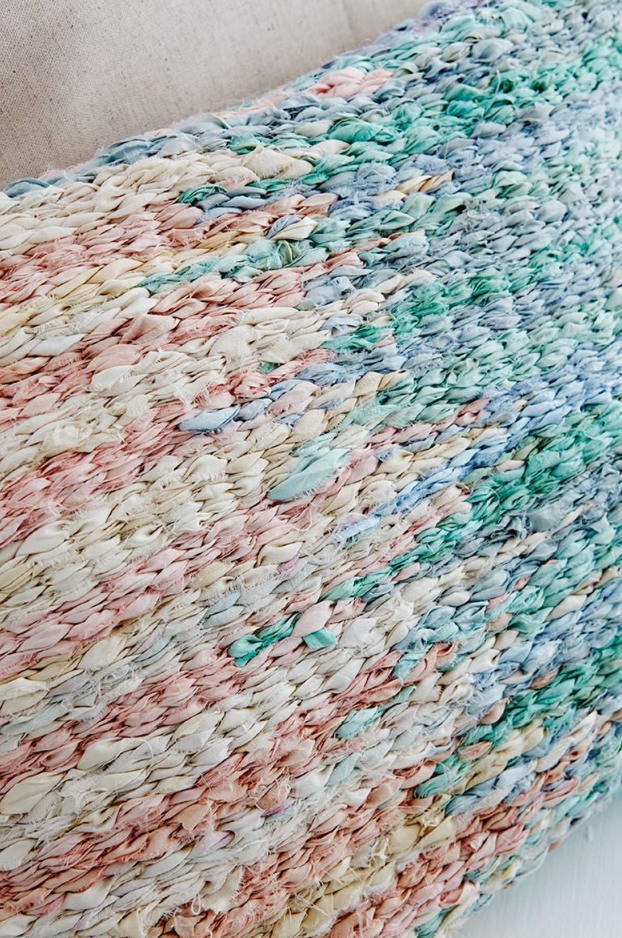
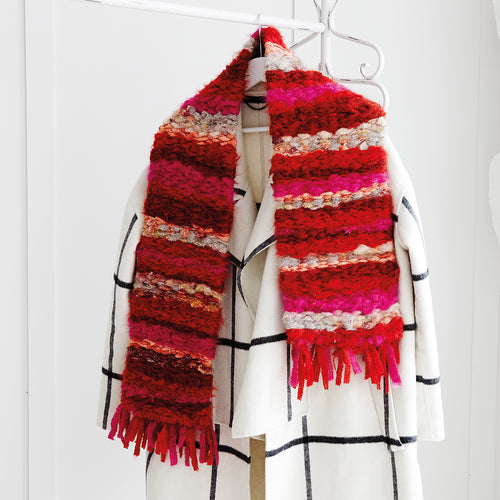
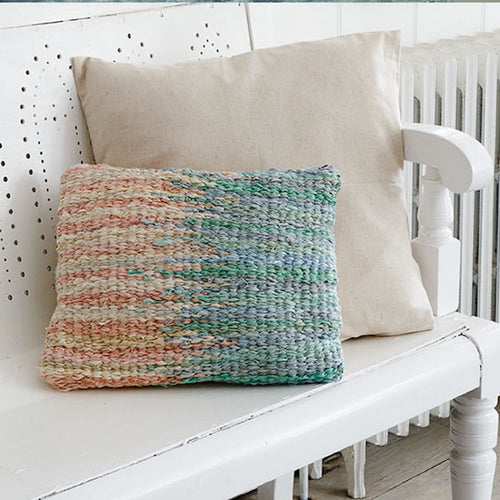
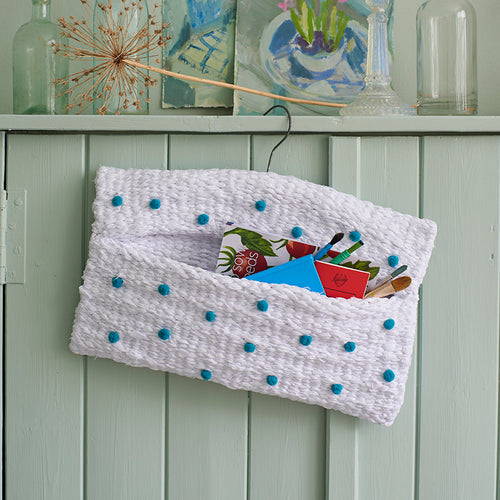
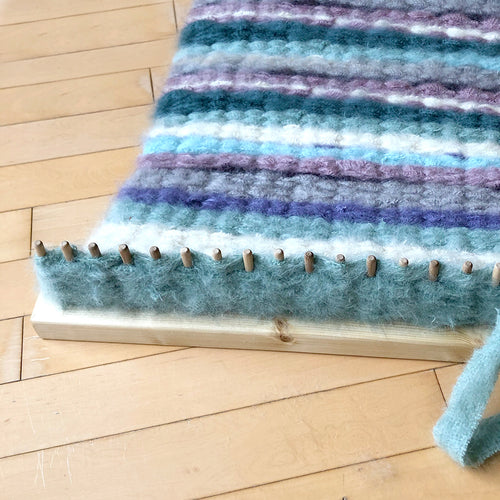
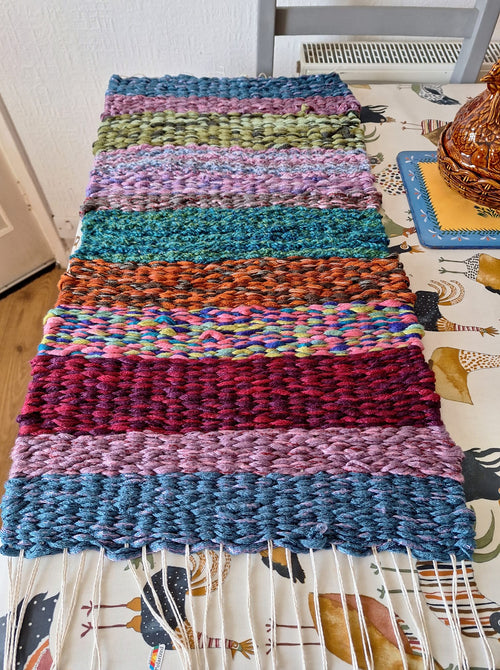
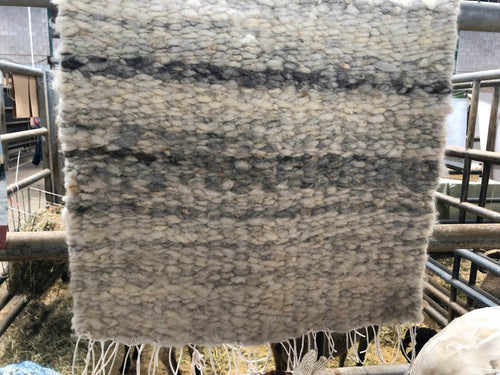
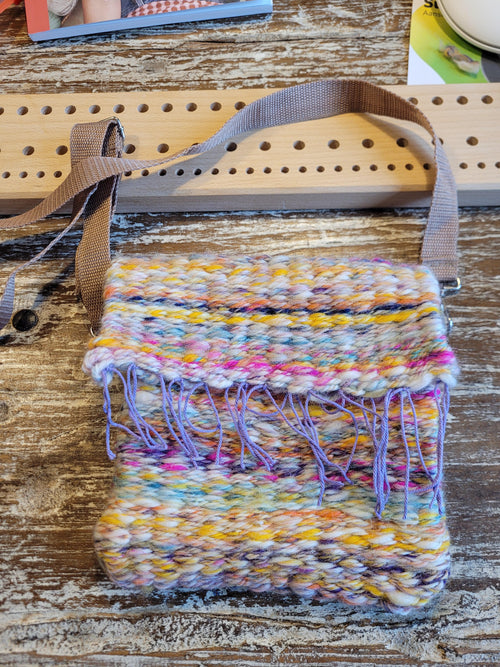
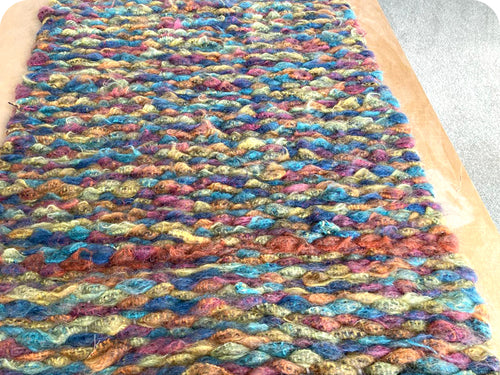
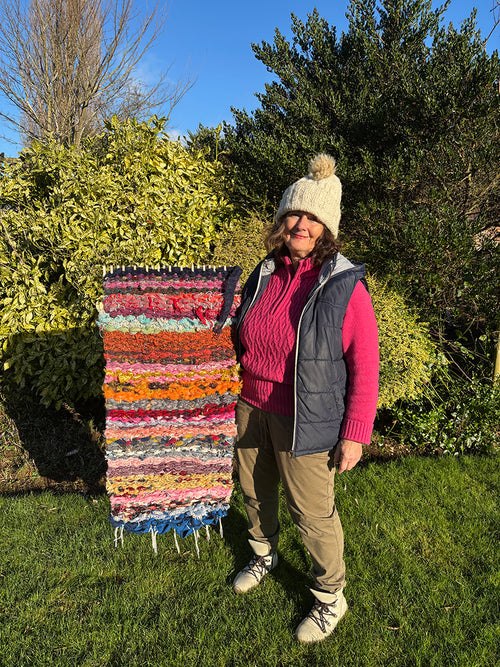
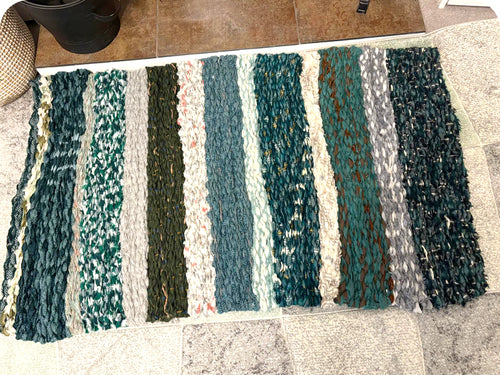
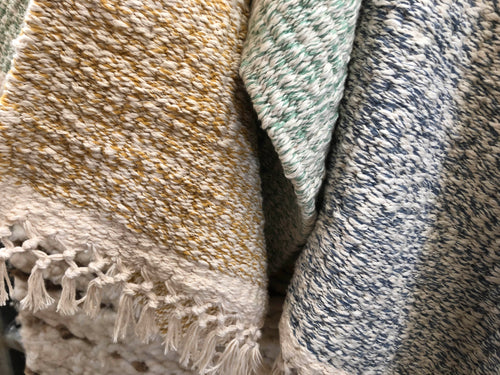
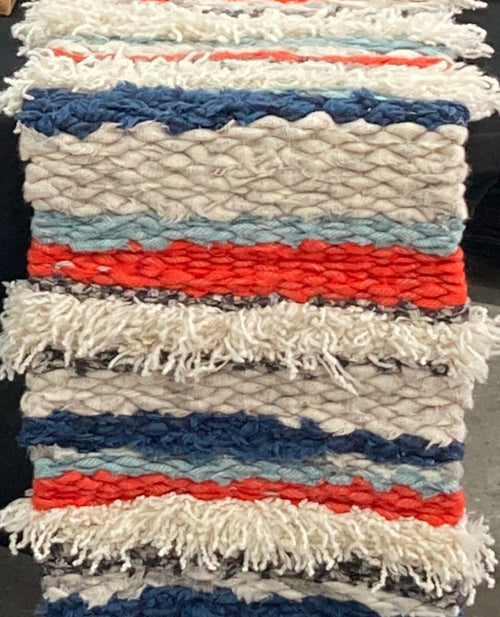
Prefer to learn in person?
We regularly run peg loom weaving classes from our Ragged Life studio in Hertfordshire and often from other locations, including Brighton, York, London, Bristol, the Lake District, Essex and more. Read more about our most popular peg loom weaving class below and browse dates by clicking through.
Fortnightly Rag Rug Inspiration Newsletter
Sign up for our fortnightly rag rug inspiration newsletter below to be the first to find out when new patterns are released, when tutorial videos go live and to build your craft community. You can unsubscribe at any time!


